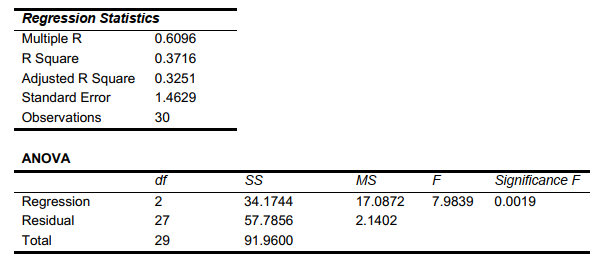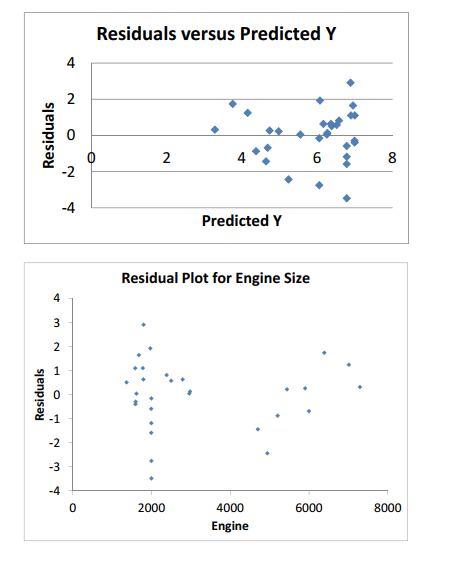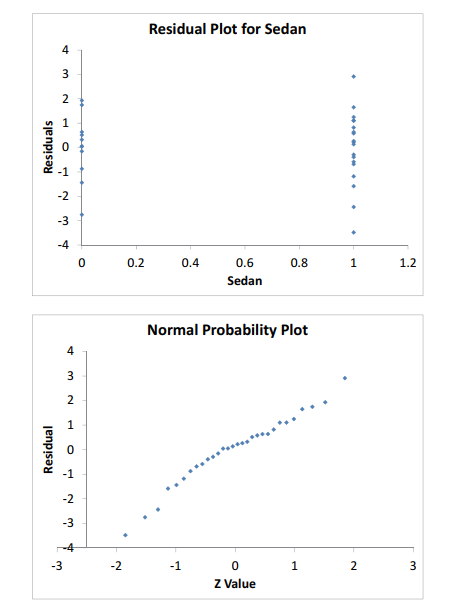SCENARIO 14-16 What are the factors that determine the acceleration time (in sec.) from 0 to 60 miles per hour of a car? Data on the following variables for 30 different vehicle models were collected: Y (Accel Time) : Acceleration time in sec. X₁ (Engine Size) : c.c. X₂(Sedan) : 1 if the vehicle model is a sedan and 0 otherwise The regression results using acceleration time as the dependent variable and the remaining variables as the independent variables are presented below. 
 The various residual plots are as shown below.
The various residual plots are as shown below. 
 The coefficient of partial determinations
The coefficient of partial determinations  are 0.3301 and 0.0594 respectively. The coefficient of determination for the regression model using each of the 2 independent variables as the dependent variable and the other independent variable as independent variables
are 0.3301 and 0.0594 respectively. The coefficient of determination for the regression model using each of the 2 independent variables as the dependent variable and the other independent variable as independent variables  are, respectively, 0.0077 and 0.0077.
are, respectively, 0.0077 and 0.0077.
-Referring to Scenario 14-16, what is the correct interpretation for the estimated coefficient for X₁?
A) As the 0 to 60 miles per hour acceleration time increases by one second, the mean engine size will decrease by an estimated 0.0005 c.c. without taking into consideration the other independent variable included in the model.
B) As the engine size increases by one c.c., the mean 0 to 60 miles per hour acceleration time will decrease by an estimated 0.0005 seconds without taking into consideration the other independent variable included in the model.
C) As the 0 to 60 miles per hour acceleration time increases by one second, the mean engine size will decrease by an estimated 0.0005 c.c. taking into consideration the other independent variable included in the model.
D) As the engine size increases by one c.c., the mean 0 to 60 miles per hour acceleration time will decrease by an estimated 0.0005 seconds taking into consideration the other independent variable included in the model
Correct Answer:
Verified
Q82: SCENARIO 14-15 Q84: SCENARIO 14-15 Q85: SCENARIO 14-15 Q94: SCENARIO 14-15 Q184: SCENARIO 14-15 Q200: SCENARIO 14-15 Q220: SCENARIO 14-15 Q227: SCENARIO 14-15 The superintendent of a school Q231: SCENARIO 14-15 The superintendent of a school Q234: SCENARIO 14-15 The superintendent of a school Unlock this Answer For Free Now! View this answer and more for free by performing one of the following actions Scan the QR code to install the App and get 2 free unlocks Unlock quizzes for free by uploading documents![]()
![]()
![]()
![]()
The superintendent of a school district
The superintendent of a school district
The superintendent of a school district

